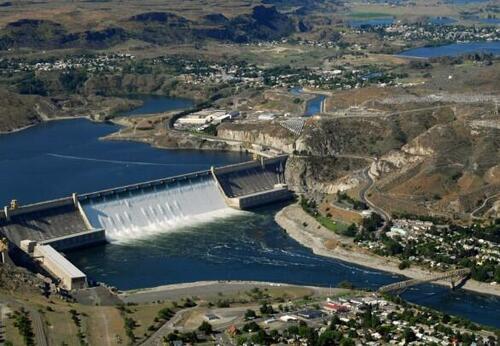$9 Billion Spent On Salmon Recovery In Oregon Has Produced “Few Discernable Results”
Today in “your tax dollars at work” news, the state of Oregon has found out that $9 billion it has doled out to help its salmon population (yes, the fish) has failed to produce any discernable results.
And to think, that’s perfectly good money we could have sent to Ukraine!
A new report from NBC affiliate KGW8 this week noted that “hundreds” of projects the Columbia River Basin has undertaken – including “habitat restoration to bounty programs on other fish that prey on salmon” – have all failed to produce results.
The revelation came from a Oregon State University co-authored by Bill Jaeger, an applied economics professor at the university. His research was recently published in the journal PLOS One.
His study looked at 50 years of salmon return data from the lowest dam on the Columbia River. The study found that before the dams went up, 16 million salmonids returned to the basin each year. By the 2010s, that number had fallen to 1.5 million.
“For a long time, there have been questions about the effectiveness of a wide range of activities taken to try to restore salmon and steelhead in the Columbia River Basin. We do not find evidence of an increase in wild fish,” Jaeger said.
The salmon are facing pressure from “hydro, habitat, harvest and hatcheries,” he added, noting there have been “steep declines” in coho, chinook, sockeye and steelhead populations because dams block fish from swimming upriver.
“Many of those species listed since the 1990s under the Endangered Species Act are ones for which the numbers have declined and continue to be of great concern,” Jaeger added.
He railed on the egregious spending’s lack of impact: “Cost effectiveness was a term that was occasionally used in a report but was never really undertaken as a serious methodology for determining where to spend money. The operations and the administration of these projects could have done a lot more to do serious cost-effective analysis to determine which of these activities seems to be generating more bang for the buck.”
He concluded: “I’m not sure how useful it is to talk about whether the money was wasted or not. That’s behind us. I think what one can do, and what one should do, is look at this evidence and ask ‘what should we be doing differently going forward?’”
Cue up another $9 billion, we guess…
Tyler Durden
Wed, 08/02/2023 – 17:20
Zero Hedge’s mission is to widen the scope of financial, economic and political information available to the professional investing public, to skeptically examine and, where necessary, attack the flaccid institution that financial journalism has become, to liberate oppressed knowledge, to provide analysis uninhibited by political constraint and to facilitate information’s unending quest for freedom. Visit https://www.zerohedge.com
